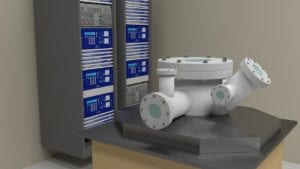 To determine what the 3D scanner is for, you need to consider its functionality. First of all, it allows you to digitize the shape of the product and get all its dimensions (including curvilinear, not suitable for typical measurements). This data is used to build a computer 3D model that can be edited and used for mechanical or thermal processing, as well as 3D printing.
To determine what the 3D scanner is for, you need to consider its functionality. First of all, it allows you to digitize the shape of the product and get all its dimensions (including curvilinear, not suitable for typical measurements). This data is used to build a computer 3D model that can be edited and used for mechanical or thermal processing, as well as 3D printing.
Application
Any engineer will evaluate these advantages and find them a worthy use in their production area. At the moment, the volume of their implementation is far from the desired, but the leading areas can be identified:
Medicine
To create implants and various individual devices, 3D scanning of body parts, casts, etc. is increasingly used. This individualizes the approach to each patient and ensures maximum comfort. There are numerous developments related to prosthetics, transplantology, etc.
Production
The device allows for high accuracy analysis of linear, angular and radial parameters, shape and location errors. Rarely, where reliability is required that extends beyond microns, and for such cases it is necessary to resort to laboratory research. In most cases, the accuracy of a typical industrial 3D scanner is more than enough. Exclusive opportunities open for design development, including re-engineering. Reading the information about the geometry of the surface of the part takes only a few seconds, at a time when even an experienced engineer would have lost his watch using traditional devices. Another important function is quality control. In a few moments you can get all the necessary sizes and compare them with the given ones. At the same time, the performance is at an altitude, while the probability of error is very low, even if small tolerances are to be considered.
Exploitation
One of the most acute issues in the operation of mechanisms and systems is the operability of parts in the presence of damage, for example, wear. The three-dimensional model will help to present the scale of the disaster and take a further decision: replacement, restoration, extension of the service life.
Architecture, construction
3D scanning of rooms and exterior parts of buildings is a very common procedure, helping in the design and in the search for defects. Here the main emphasis is not on high accuracy, but on the capture of large objects.
Culture and art
It is such an instrument as a 3D scanner that generates the most accurate display of a three-dimensional object. This allows you to create accurate computer models in electronic catalogs or interactive illustrations on Internet sites.
Training
With what would have to work for future specialists, sometimes it is worth exploring and creating your own model in every possible way. You need a practice that nothing will replace. A set of 3D scanner and 3D-printer give such an opportunity with the least difficulties. At the moment, many institutions have similar equipment and actively use it in the educational process.
Correctly understanding what the 3D scanner is for, it is worthwhile to think about the further development of the technology. A worthy alternative is not foreseen and in the coming decades interest in it will not weaken. Serial executions have already passed the process of optimization and cheaper, so the cost is quite affordable and reasonable for its class of equipment.
Picture credit: cintersimone
